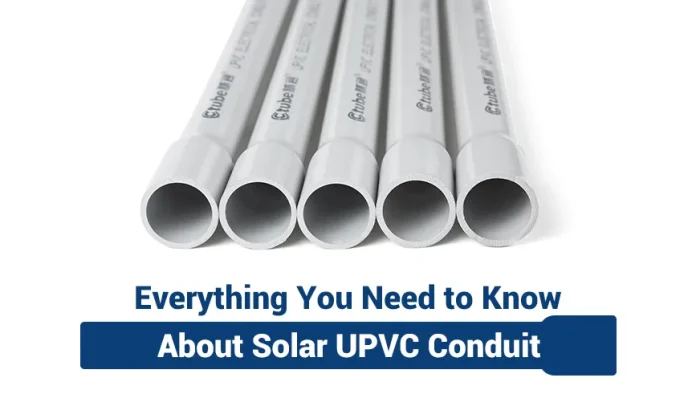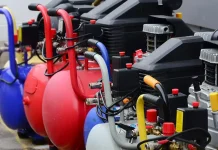In the world of solar power systems, ensuring safety, durability, and optimal performance is essential. One of the key components that help achieve these goals is solar conduit. Although it might seem like a small part of the entire solar setup, choosing the right conduit and understanding its importance can have a significant impact on the efficiency and longevity of your solar installation.
If you’re considering installing solar panels or are involved in the solar energy industry, understanding solar conduit is crucial. In this guide, we will dive deep into what solar conduit is, why it’s important, the types of solar conduit available, installation tips, and how to choose the best conduit for your system.
What is a Solar Conduit?
At its core, a solar conduit is a protective tube or channel used to house and protect the electrical wires that connect various components of a solar power system. It serves as a barrier, safeguarding the wiring from environmental factors like moisture, heat, and mechanical damage, which could otherwise lead to malfunction, safety hazards, or even system failure.
The purpose of the solar conduit is not just to protect wires but also to ensure that they are properly organized and that the system meets local electrical codes. Proper conduit installation also minimizes electrical interference, which can affect the performance of solar equipment.
Why is Solar Conduit Important?
1. Safety: The most important reason for using solar conduit is to ensure the safety of the system. Solar panels generate electricity, and improper wiring can lead to electrical fires, shocks, or even explosions. Conduit provides a secure, insulated environment for electrical cables, reducing the risk of these dangers.
2. Protection from Elements: Solar installations are often exposed to harsh environmental conditions. Whether it’s high heat, freezing temperatures, or rain, the conduit shields the wiring from these external threats, increasing the longevity of your system.
3. Compliance with Codes: In many regions, building codes and electrical regulations require solar systems to use conduit for wire protection. Compliance with these codes ensures that the installation is safe and can be inspected and approved without complications.
4. Aesthetic Appeal and Organisation: Solar conduit helps keep wiring organized and prevents a messy installation. By running wires through a conduit, the setup looks neater and more professional, making maintenance and troubleshooting easier.
Types of Solar Conduit
There are several types of conduits commonly used in solar power installations, each with unique characteristics suited for different environmental conditions. Below are the most widely used types of solar conduit:
1. EMT (Electrical Metallic Tubing): EMT is a lightweight metal conduit that offers good protection against physical damage. It’s often used in indoor solar installations or in areas where the conduit is exposed to minimal external elements. While it’s not as durable as some other types of conduit, it is still highly resistant to corrosion and provides excellent wire protection.
2. PVC Conduit: PVC (polyvinyl chloride) conduit is a non-metallic option that is lightweight, flexible, and resistant to corrosion. PVC is ideal for outdoor solar installations because it withstands exposure to the elements. Additionally, it’s cost-effective and easy to install. However, it is more vulnerable to mechanical damage than EMT.
3. Rigid Metal Conduit (RMC): Rigid Metal Conduit, or RMC, is made from steel or aluminium and is the most durable conduit option. It is typically used in areas where the conduit needs to withstand physical damage or extreme weather conditions. It offers excellent protection and is also fire-resistant, making it ideal for high-risk installations.
4. Flexible Metal Conduit (FMC): A Flexible Metal Conduit is made of metal but has a corrugated structure, allowing it to be bent and shaped more easily than a rigid conduit. This flexibility makes it an excellent choice for connecting solar panels to inverters and other components in tight spaces or areas with limited access.
5. Schedule 80 PVC: Schedule 80 PVC conduit is heavier and thicker than standard PVC and is designed for use in more demanding environments. It’s typically used in underground solar installations or areas with harsh conditions, offering superior protection against physical damage and chemical exposure.
Choosing the Right Solar Conduit
When selecting solar conduit for your installation, several factors need to be considered to ensure you’re making the best choice for your system:
1. Environment: If your solar installation is in an area with high moisture levels, such as near a body of water or in a humid climate, choosing a waterproof or corrosion-resistant conduit like PVC, LFMC, or RMC will help protect the wiring from environmental damage.
2. Code Compliance: Always check your local electrical codes to ensure that the conduit you choose meets the necessary regulations. Some areas may have specific requirements for types of conduit or installation methods, so it’s essential to follow the guidelines to avoid fines or issues with inspection.
3. Durability: Consider the physical environment where the conduit will be installed. For locations prone to physical damage or extreme weather conditions, a more robust conduit like RMC or EMT may be required. If the installation is in a protected or indoor space, PVC or flexible conduit might be sufficient.
4. Cost: The cost of solar conduit varies depending on the material and size. PVC and EMT are more affordable options, while RMC and Schedule 80 PVC are generally pricier due to their durability and increased protection.
Conclusion
Solar conduit plays a vital role in protecting your solar system’s wiring from damage, ensuring safety, and helping the installation comply with regulations. By understanding the types of conduit available and the factors to consider when choosing one, you can make an informed decision that will benefit your solar setup in the long run. Whether you’re a homeowner installing solar panels yourself or a professional installer, understanding conduit is key to a safe, efficient, and durable solar power system.










